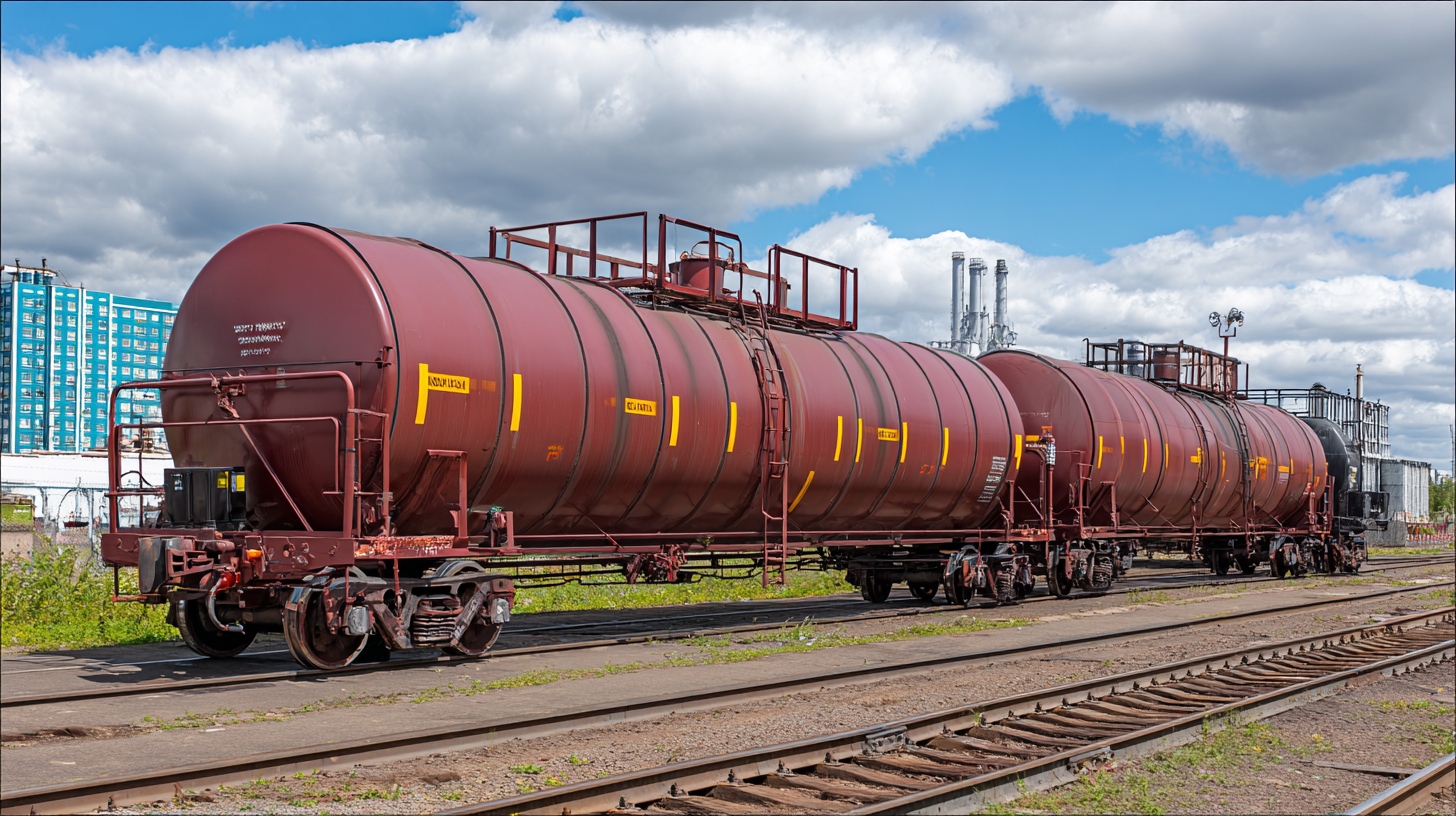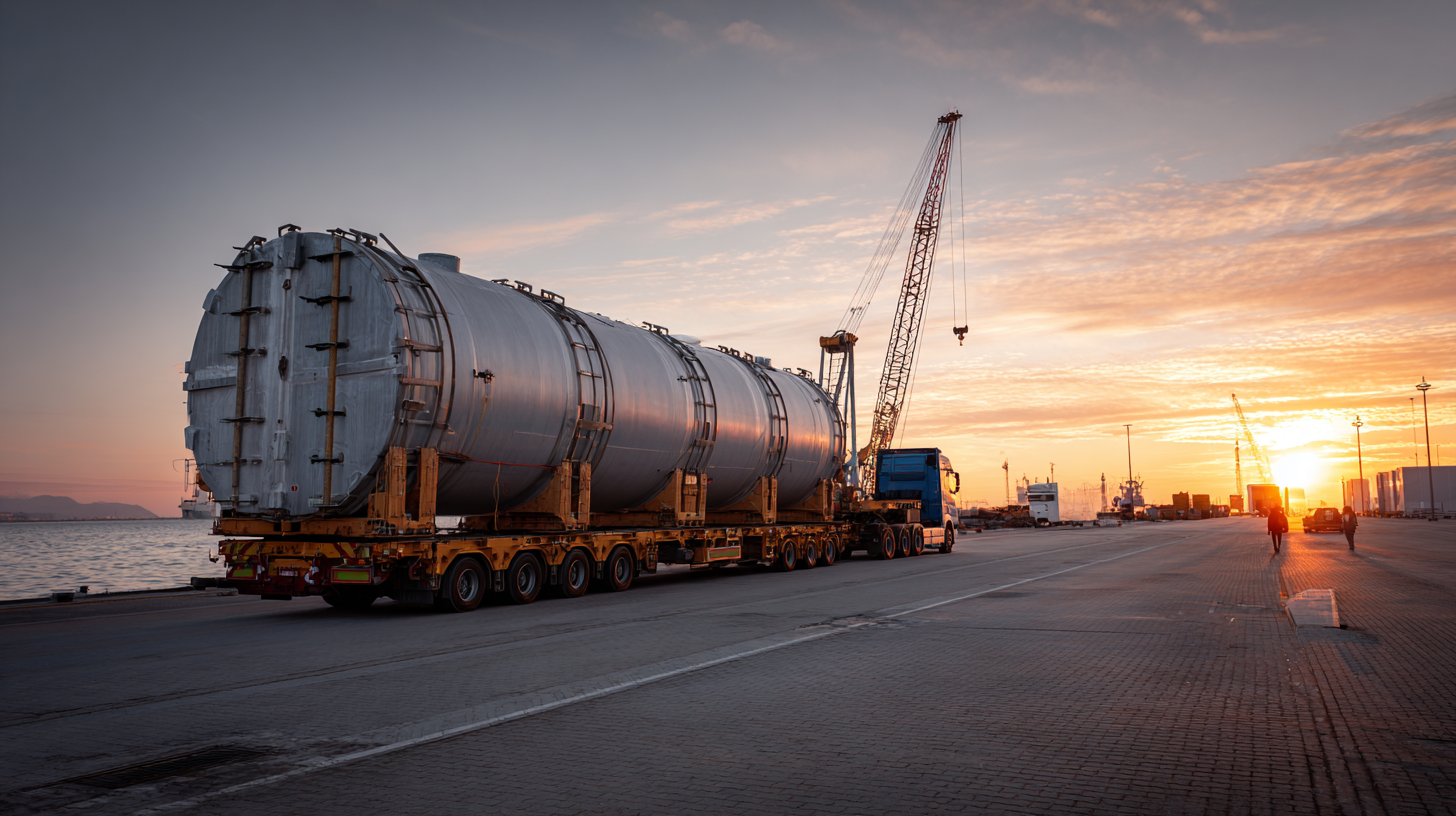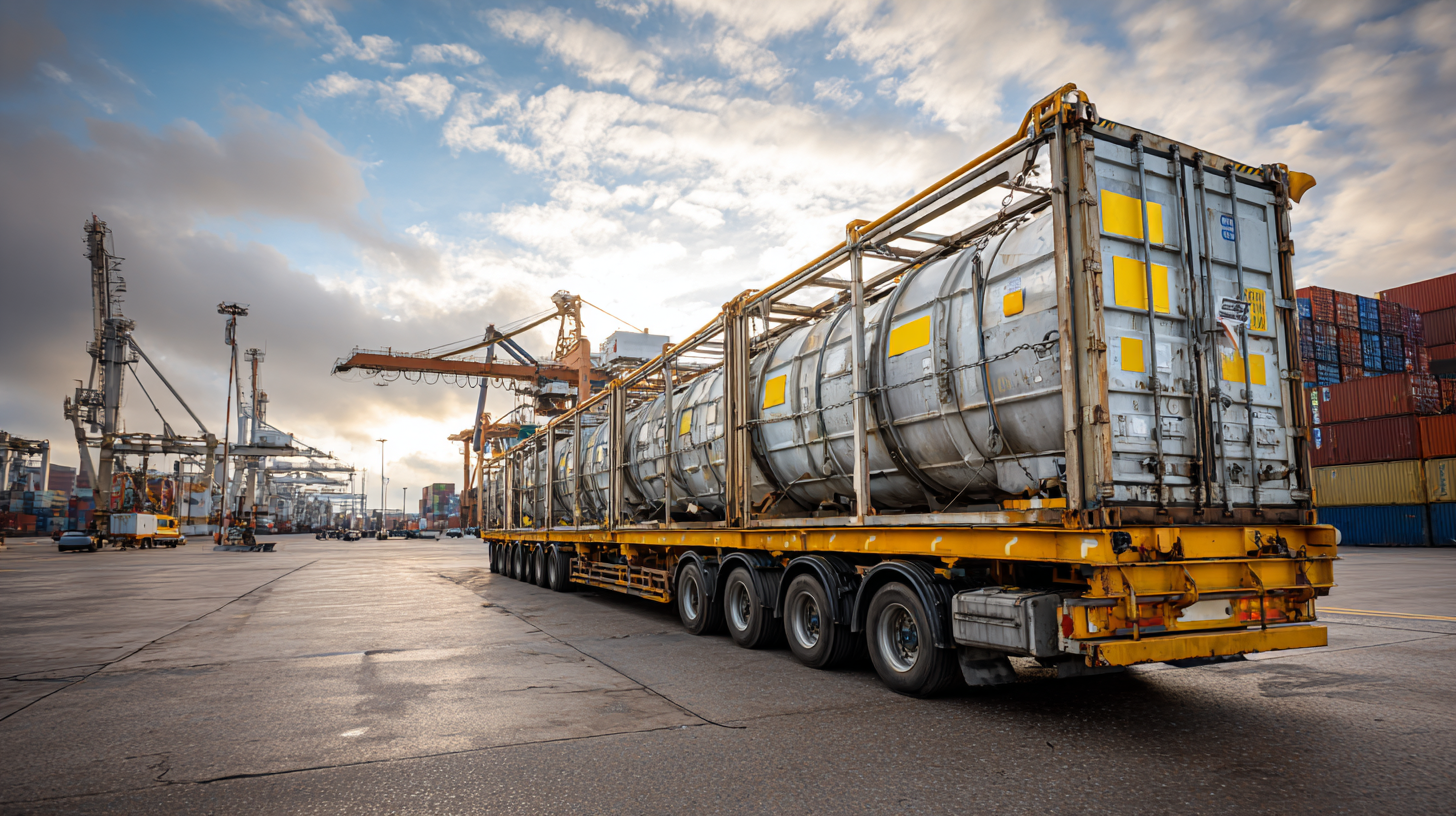- Home
- >
- Knowledge Center
- >
- Blogs
Blogs
Sharing knowledge is key to an innovative and healthy industry! This knowledge center is therefore a central place on our website to share information. Read all about our industry in the blogs below!
Future Trends in Best Tank Container Parts and How to Adapt to 2025 Industry Changes
As the logistics and supply chain industry evolves, the importance of high-quality Tank Container Parts has never been more critical. With the global tank container market projected to reach USD 3.8 billion by 2025, according to a recent report by Grand View Research, adapting to upcoming trends is essential for staying competitive. The increasing demand for energy-efficient and durable tank containers highlights the necessity for innovation in component manufacturing and design. Furthermore, the relevance of compliance with emerging regulations and sustainability practices will shape the sourcing and development of tank container parts. This blog will explore the future trends in the industry, offering insights on how companies can efficiently adapt their strategy to not only meet but exceed the expectations of 2025’s market dynamics.

Emerging Technologies in Tank Container Manufacturing for 2025
As we approach 2025, the tank container manufacturing industry is on the brink of a technological revolution. Emerging technologies are set to redefine how tank containers are designed, constructed, and maintained. Innovations such as advanced materials like carbon fiber composites and smart sensors integrated into containers are paving the way for lighter, more durable, and safer tank containers. These materials not only enhance performance but also reduce maintenance costs and improve overall efficiency in logistics.

Another pivotal trend is the application of IoT (Internet of Things) technology in tank container management. IoT devices can monitor conditions such as temperature and pressure in real-time, providing valuable data that helps in optimizing operations and ensuring safety. This shift towards smart containers enables manufacturers and operators to make data-driven decisions, leading to improved supply chain transparency and predictive maintenance strategies. Embracing these technologies will be crucial for companies aiming to stay competitive and meet the evolving demands of the industry by 2025.
The Role of Sustainability in Future Tank Container Parts
As we look towards 2025, sustainability will play a pivotal role in the evolution of tank container parts. The pressing need to reduce carbon footprints and promote environmentally friendly practices is shaping the manufacturing processes and materials used in the production of these components. Companies in the tank container industry are increasingly adopting recyclable materials and innovative designs that minimize waste, aligning their operations with global sustainability initiatives. This shift not only enhances environmental responsibility but also positions organizations as forward-thinking players committed to a greener future.
Moreover, the integration of advanced technologies, such as smart sensors and IoT solutions, is enhancing the sustainability of tank containers. These technologies allow for real-time monitoring of environmental conditions and facilitate predictive maintenance, thereby reducing the likelihood of spills and leaks. By optimizing the lifecycle of tank container parts through technological innovations, companies can ensure compliance with stringent environmental regulations while also improving operational efficiency. Adapting to these sustainability trends will not only benefit the planet but also enhance the competitive edge of businesses within the industry.
Future Trends in Tank Container Parts (2025)
Anticipating Regulatory Changes Impacting Tank Container Design
As the tank container industry navigates the complexities of upcoming regulatory changes, it is essential for manufacturers and operators to stay ahead of the curve. According to a recent report by the International Maritime Organization (IMO), the implementation of stricter guidelines on emissions and safety standards is set to reshape the design and materials used in tank containers by 2025. These regulations are expected to reduce carbon emissions from tank containers by up to 30%, pushing companies to adopt innovative materials and technologies to meet compliance.
The focus will likely shift towards lightweight, corrosion-resistant materials that enhance the durability and efficiency of tank containers. For instance, a study by the Container Owner Association indicates that using advanced composite materials can decrease the overall weight of tank containers by roughly 15%, improving fuel efficiency and lowering transportation costs. Furthermore, incorporating real-time monitoring systems will not only help in adhering to safety regulations but also optimize logistics and enhance cargo safety, thus aligning with the industry's ongoing commitment to sustainable practices. Preparing for these changes now will not only ensure compliance but also provide a competitive edge in the evolving market landscape.
Consumer Demand Shifts: Adapting Tank Containers for New Markets
As we move toward 2025, understanding shifts in consumer demand is crucial for adapting tank containers to meet the needs of emerging markets. Today’s consumers are more eco-conscious, favoring sustainable products. This trend emphasizes the importance of using materials that minimize environmental impact while ensuring safety and efficiency in transport. Companies should invest in eco-friendly tank container materials and technologies to remain competitive and align with shifting preferences.
Tips for adapting your tank containers to new market demands include conducting regular market research to identify key trends and preferences among consumers. Investing in versatile designs that accommodate a variety of liquids beyond traditional petroleum products will open up new opportunities. Additionally, implementing smart technology within containers can enhance tracking and monitoring, providing consumers with transparency and assurance regarding the safety of their goods.
Moreover, fostering partnerships with local suppliers can help businesses better understand regional demands and adjust their offerings accordingly. This localized approach not only builds a strong brand presence but also caters to specific consumer needs, ultimately driving growth in the evolving landscape of the tank container industry.
Future Trends in Best Tank Container Parts and How to Adapt to 2025 Industry Changes
| Component | Material | Current Demand | 2025 Forecast | Market Trend |
|---|---|---|---|---|
| Tank Shell | Stainless Steel | High | Very High | Increased Regulations |
| Insulation | Polyurethane Foam | Medium | High | Energy Efficiency Focus |
| Valves | Brass | Medium | Increased | Automation and Smart Tech |
| Pipelines | Composite Materials | Low | Medium | Sustainability Initiatives |
| Seals and Gaskets | PTFE | High | Very High | Chemical Compatibility Demand |
Strategic Partnerships: Collaborating for Innovation in Tank Containers
As the tank container industry gears up for significant changes by 2025, fostering strategic partnerships emerges as a crucial approach for driving innovation. Collaborating with key players not only fuels the development of advanced technologies but also enhances the ability to adapt to evolving market demands. The projected growth in related sectors, such as the global level sensor market—which is anticipated to increase from $8.93 billion in 2025 to $11.92 billion by 2032—highlights the importance of incorporating cutting-edge solutions to stay ahead of the competition.
The aquarium market is another area witnessing rapid expansion, set to grow from $3.79 billion in 2024 to $6.21 billion by 2032. This trend suggests a rising consumer interest in high-quality and innovative tank systems. By strategically partnering with technology providers, manufacturers of tank containers can leverage expertise and resources to create smarter, more efficient products. Innovations such as IoT-enabled sensors and automated monitoring systems can streamline operations, reduce costs, and enhance user experiences, positioning companies as leaders in a progressively demanding market.

